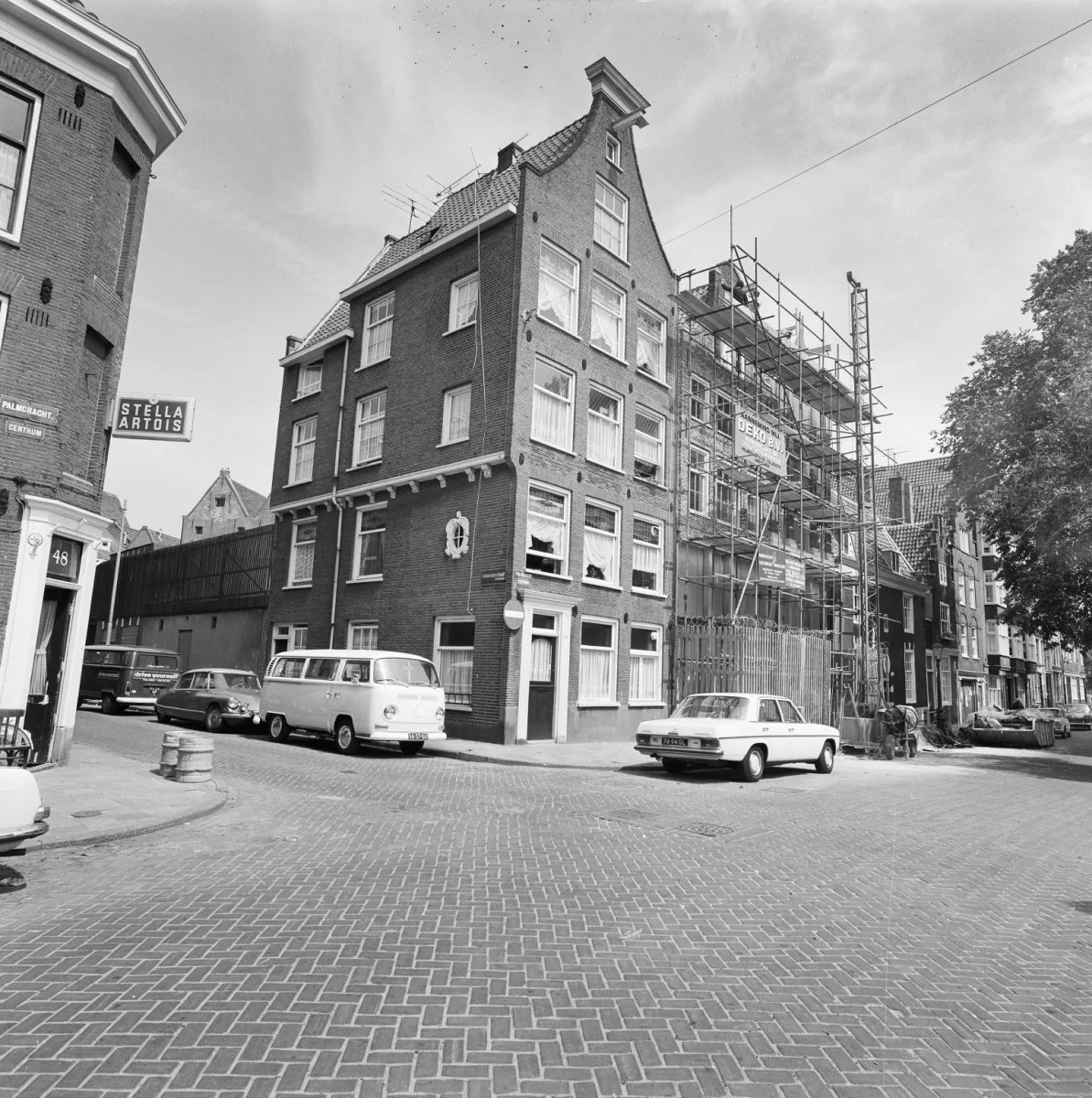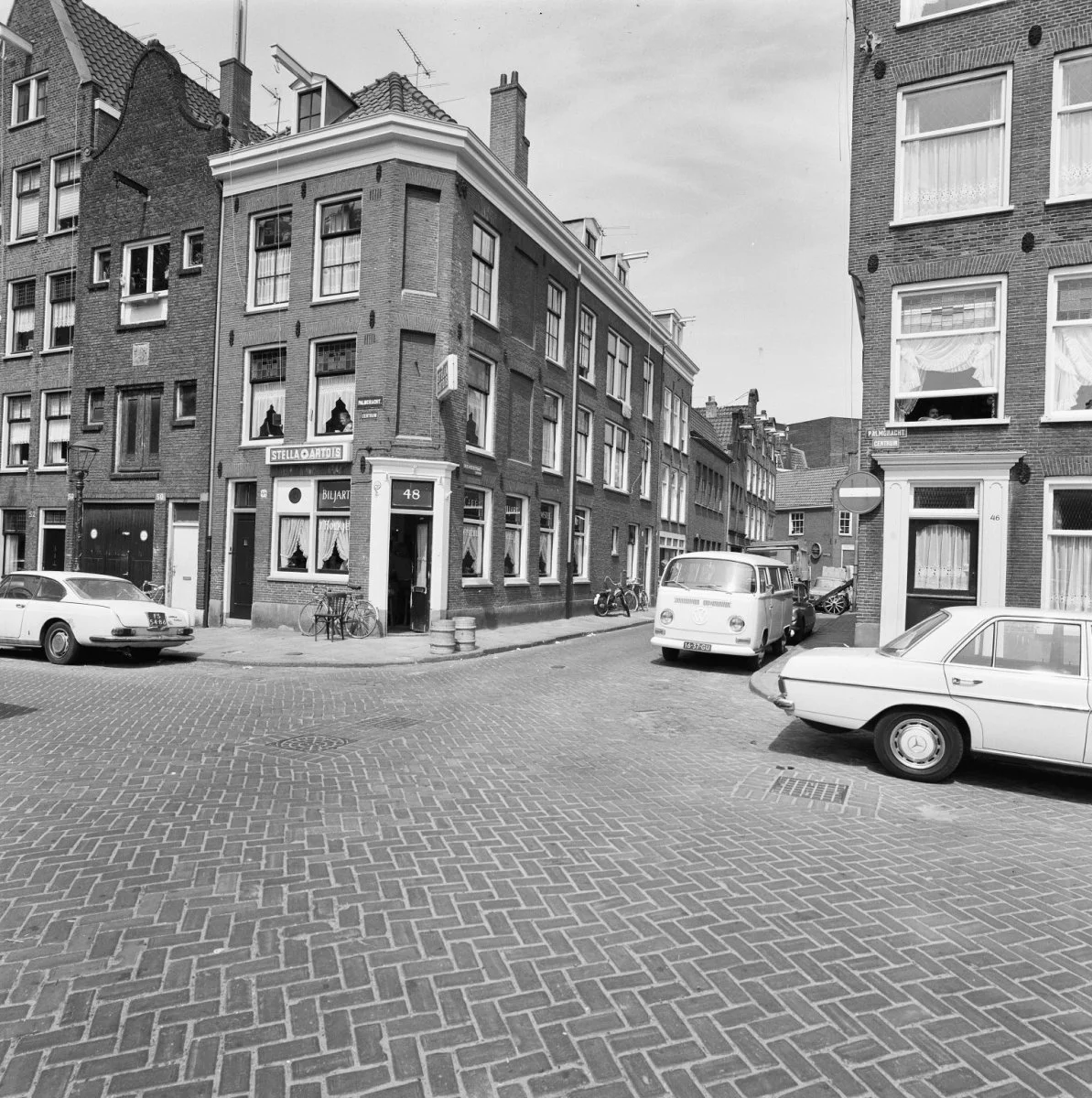The Rich History of Palmgracht 64
From 17th-Century Musketeers to a Modern-Day Landmark
Tucked away in the heart of the Jordaan, Palmgracht 64 has a story that reaches all the way back to the 17th century. Amsterdam was booming at the time — new homes and courtyards were being built throughout the city, each with its own character. What makes this house stand out is its eye-catching gable stone, showing a musketeer and the words “In De Batavier”. It’s a small but powerful reminder of a big historical moment.
In the early 1600s, under the leadership of Prince Maurits, the Dutch built a professional army to defend the Low Countries. This was a big deal — for the first time, soldiers were trained using standard uniforms, weapons, and drills. Artist Jacob de Gheyn II captured this new approach in a series of detailed prints called De Wapenhandelinghe (1607), which later even inspired Rembrandt.
The musketeer on the gable stone of Palmgracht 64 is believed to be based on two of these prints, right down to the pose and equipment. The elegant cursive inscription “In De Batavier” — rare for a gable stone — may refer to the Batavians, a tribe known for rising up against the Romans. It’s a subtle but clear parallel to the Dutch struggle for independence from Spanish rule. The stone was placed in 1648, the year the Peace of Münster officially ended the Eighty Years’ War and confirmed the Dutch Republic’s independence. Some believe the house may have been the home of a veteran from Prince Maurits’ army, settling down in the newly developing Jordaan.
Though the original house was torn down in the 1930s, the gable stone was carefully preserved and added to the façade of the new building — keeping its legacy alive.
Palmgracht 64 is also closely tied to the nearby Raepenhofje, a historic courtyard built in the same year, 1648. Pieter Adriaensz. Raep, a city treasurer and militia captain, designed it as a peaceful retreat, with six small houses arranged around a central green with a water well. Despite some upgrades over the years — like kitchens and bathrooms added in the 1950s, and renovations in the 1990s — the Raepenhofje still holds on to much of its original 17th-century charm..
View of Palmgracht towards Brouwersgracht, before the canal was filled in 1895.
One image, taken by Jacobus van Eck in 1918, showcases the building with the famous “De Batavier” gable stone, which dates back to 1648
The fair on Palmgracht being set up for the Jordaan Festival, September 12, 1968, capturing a lively moment in the neighborhood’s history.
The corner of Palmgracht in 1974
Amsterdam Folk Theatre ‘The Jordaan on Stage’ with a bus on Palmgracht, Amsterdam, June 20, 1948. Photo by Ben van Meerendonk.







